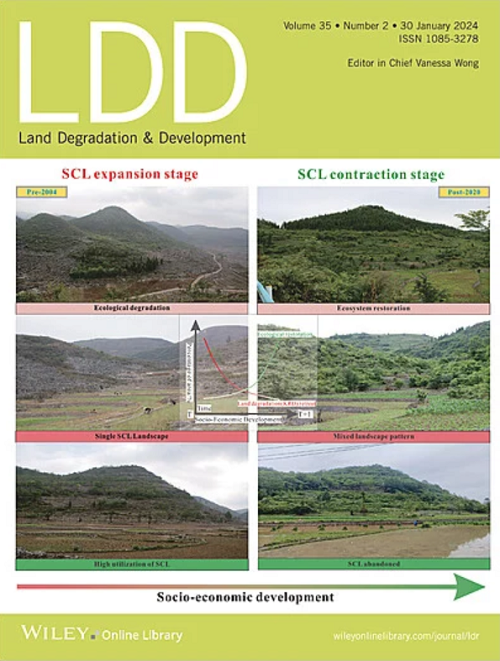Litter Decomposition Stage Exerted a Stronger Influence on Soil Organic Carbon Fractions Than Forest Litter Type
IF 3.6
2区 农林科学
Q2 ENVIRONMENTAL SCIENCES
引用次数: 0
Abstract
Litter decomposition is a fundamental driver of carbon sequestration in forest ecosystems, influenced by tree species composition and associated litter quality. However, how different forest litter types affect decomposition dynamics, soil biochemistry, and organic carbon (SOC) sequestration remains unclear. We conducted a 210‐days in situ litterbag experiment comparing leaf litter from凋落物分解阶段对土壤有机碳组分的影响强于森林凋落物类型
凋落物分解是森林生态系统中碳固存的基本驱动力,受树种组成和相关凋落物质量的影响。然而,不同凋落物类型对凋落物分解动力学、土壤生物化学和有机碳(SOC)固存的影响尚不清楚。我们对油松(PTF)、麻栎(QAF)和混交林(MF)的凋落叶进行了为期210天的原位垃圾袋实验。结果表明,PTF凋落物的分解速率最慢,碳、磷、纤维素和木质素的剩余比例最高,其次是MF和QAF。土壤氮、磷、铵含量在不同森林类型间变化不大,微生物群落结构变化不大。值得注意的是,QAF凋落物促进了最高的颗粒有机碳(POC)含量和POC/SOC比,而MF凋落物促进了矿物相关有机碳(MAOC)的积累。分解阶段是土壤有机碳和POC动态的主要驱动因素,而MAOC受凋落物类型的影响更为强烈。这些发现表明,与纯林分相比,混交林可能会增加有机碳的固存,但其长期稳定性有待进一步研究。
本文章由计算机程序翻译,如有差异,请以英文原文为准。
求助全文
约1分钟内获得全文
求助全文
来源期刊

Land Degradation & Development
农林科学-环境科学
CiteScore
7.70
自引率
8.50%
发文量
379
审稿时长
5.5 months
期刊介绍:
Land Degradation & Development is an international journal which seeks to promote rational study of the recognition, monitoring, control and rehabilitation of degradation in terrestrial environments. The journal focuses on:
- what land degradation is;
- what causes land degradation;
- the impacts of land degradation
- the scale of land degradation;
- the history, current status or future trends of land degradation;
- avoidance, mitigation and control of land degradation;
- remedial actions to rehabilitate or restore degraded land;
- sustainable land management.
 求助内容:
求助内容: 应助结果提醒方式:
应助结果提醒方式:


